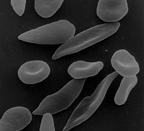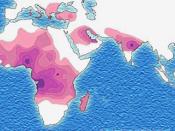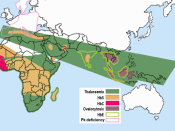A mother of in central Africa has had no health problems her entire life. She has four beautiful children in her lifetime. Her first child of eight years old catches malaria; he sweats in his sleep every night, experiences the chills, is plagued with the fever, and has periodic attacks. To make matters even worse he has developed the condition known as splenomegaly which causes an enlargement of the spine that cripples him to his end when he dies of anemia. The second child, a daughter, is born with the genetic condition known as sickle cell anemia. Throughout this child's life she experiences ulcers up and down her legs, many fevers, and attacks that seem to be the unbearable pain a human can withstand without passing out. She will never be around long enough for her seventeenth birthday. Her last two children live long and healthy lives. Over time Mother Nature has found a side door around malaria, but she has unleashed death with his sickle, causing people's red blood cells not to function properly in carrying oxygen, causing terrible side effects and death.
For a long time little was known of blood diseases. People in central Africa were experiencing pain and dieing from an unknown killer. In 1956, Dr. Vernon Ingram and Dr. Paulings tested the blood of patients in central Africa. Surprisingly there were key differences between the hemoglobin of the some patients (Silverstein 17). "Hemoglobin is made up of chains of amino acids, like proteins; these chains are folded and looped in a complicated structure"(Johnson 325). In order to break up the bonds of hemoglobin and change it into mixture of shorter amino acids, Dr. Ingram used enzymes and other chemicals. By organizing these fragments of sections, it is possible to work out a map to the...


